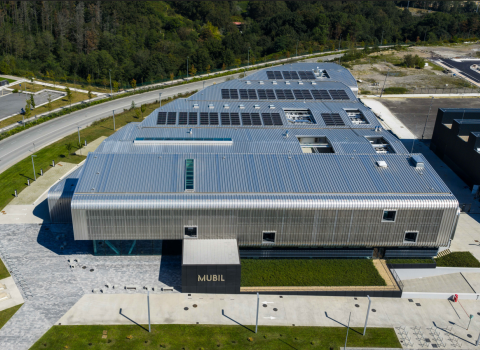EU’s new strategy prioritises clean hydrogen, but the technology is in its infancy and between €180B - €470B is needed to bring it into widespread use

Renewable hydrogen will play a key role in Europe’s green energy transition, helping to decarbonise industry, transport and power generation across the continent, according to the European Commission’s new hydrogen strategy.
The aim is to rapidly increase capacity to produce clean hydrogen, using excess electricity from renewable wind and solar sources to drive large scale electrolysis of water, splitting it into hydrogen and oxygen.
Between now and 2024, renewable energy capacity will be increased six-fold and 6 GW of electrolysers will be installed. By the end of the decade, there should be 40GW of renewable-powered electrolysers on stream, producing ten million tonnes of the gas.
If everything goes according to plan, hydrogen will be widely used in all hard-to-decarbonise sectors, such as the steel and cement industries, and to fuel planes and ships. The euro will become a benchmark currency for sustainable energy trade.
“It is an ambitious plan, but it is achievable,” said Kadri Simson, EU’s energy commissioner.
For Greg Arrowsmith, head of the Association of European Renewable Energy Research Centres, prioritising hydrogen as a power source makes sense more now that 15 years ago. “This is because the EU’s climate ambition has been ratcheted up, implying that even difficult-to-decarbonise sectors like heavy industry have to achieve carbon neutrality by mid-century,” he said. “Hydrogen is one of the ways, sometimes the only way, this can happen.”
However, the technology for producing clean hydrogen by electrolysis is still in its infancy, which makes it expensive and risky. “If it doesn’t deliver, we will have made the wrong investment,” said Tara Connolly, energy campaigner at the European branch of Friends of the Earth.
Streamlining investment
To make widespread clean hydrogen use a reality, Europe will have to invest between €180 and €470 billion in research and infrastructure development in the next 20 years.
Some of the money will come from EU programmes, including the recovery fund, the Just Transition Fund, the European Innovation Bank and Horizon Europe.
To streamline the system, the EU has set up a Clean Hydrogen Alliance, to coordinate EU hydrogen investments along the entire hydrogen value chain, from production to industrial applications.
The alliance has been criticised for being industry heavy, excluding independent experts and clean energy industry representatives. While it is “a step in the right direction” Green MEP Henrike Hahn said the alliance “should be transparent and include independent experts, civil society and renewable energy industry representatives, involving and informing the EU Parliament as well.”
Connolly expressed fears that the alliance may undermine Europe’s democratic decision-making. “It should not be put into a body that hydrogen sector and the fossil fuel industry [personnel] get to fill,” said Connolly.
In the strategy, the commission left the door open for hydrogen production to be powered by fossil fuels during the transition period. It estimates €3 to €18 billion will be invested in low-carbon fossil-based hydrogen in the next two decades.
The electrolysis technology for producing clean hydrogen is completely different from fossil-fuel reforming, a process that produces a reaction between natural gas and steam, which is the most common production method currently. Therefore, Connolly said, investing in the latter makes little sense. “We’re not so good at retiring old technologies.”
Hahn is also disappointed the commission did not rule out fossil fuel derived hydrogen. “This would be both a severe economic and environmental fault, locking Europe into a dinosaur energy system from the past,” said Hahn.
Arrowsmith believes for now, in the transition period, the focus should fall on directly using renewable electricity “to have the greatest greenhouse gas impact.”
Clean hydrogen research
The commission aims to advance clean hydrogen technology through a Clean Hydrogen Partnership, a public-private partnership funded under Horizon Europe, to streamline research on renewable hydrogen production, storage, transport and distribution.
Meanwhile, research on the deployment and use of hydrogen will be funded under other Horizon Europe partnerships.
In addition, the Innovation Fund, will provide €10 billion in grants to large-scale green technology projects, including clean hydrogen. Last week, the commission launched the first €1 billion call for projects under the Innovation Fund.
However, some argue that trying to develop all elements of the hydrogen value chain in parallel is flawed. Joydeep Gutta, the chair of Functional Materials at KTH Royal Institute of Technology, said there is a “need to compartmentalise the three aspects: production, storage, use and societal value.” Policymakers are trying to move them all forward at once, which is only “good if you have well developed science,” Gutta said.





 A unique international forum for public research organisations and companies to connect their external engagement with strategic interests around their R&D system.
A unique international forum for public research organisations and companies to connect their external engagement with strategic interests around their R&D system.